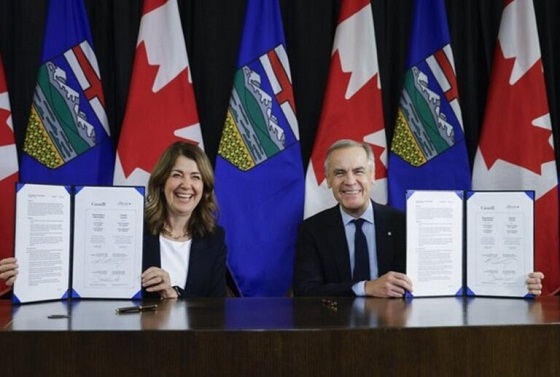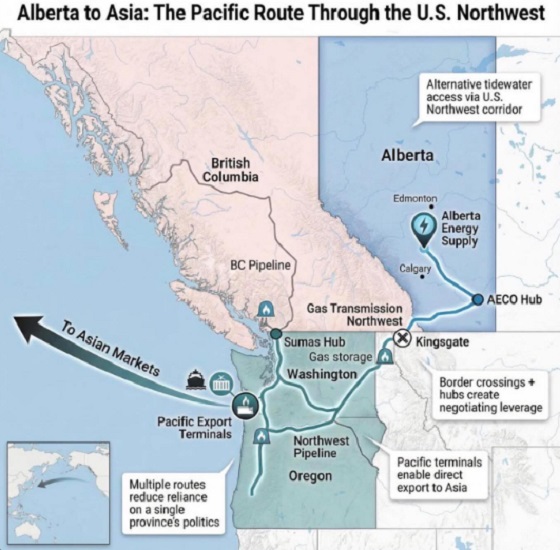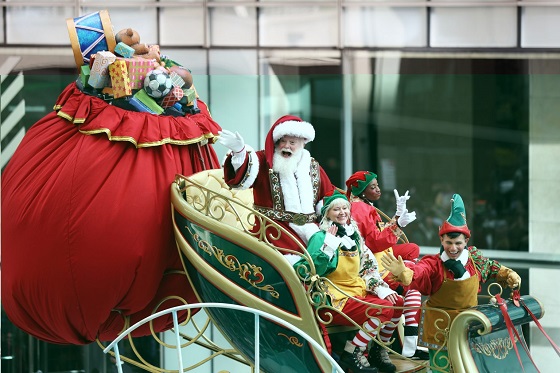Alberta
China’s ban on Canadian beef still in place year-and-a-half later; industry in dark
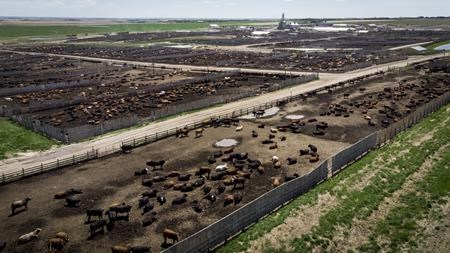
CALGARY — A Chinese ban on Canadian beef that industry officials expected would be short-lived remains in place 17 months later, and industry representatives say they remain in the dark about the reasons.
China has been blocking beef shipments from Canadian processing plants ever since an atypical case of BSE, or mad cow disease, was found on an Alberta farm in December of 2021.
At the time, Canadian officials expressed little concern that the case would have lasting market impacts. Atypical BSE develops spontaneously in about one in every one million cattle and unlike the classic BSE strain — which has been linked to the fatal neurological disorder Creutzfeldt-Jakob disease — it poses no health risk to humans and is not transmissible.
While most of Canada’s trading partners did not respond with any form of trade restrictions after the discovery of the case, South Korea and the Philippines joined China in suspending beef imports from this country.
However, both South Korea and the Philippines lifted the restrictions less than two months later, while China — which in 2021 was Canada’s third-largest beef export market, importing $193 million worth of product — has still not resumed trade.
“Most countries do not close when you find an atypical case,” said Dennis Laycraft, executive vice-president for the Canadian Cattle Association.
“It’s just a few that did and you know, all those other countries opened up fairly quickly. So yeah, really the outlier here is China.”
Adding to the confusion, Laycraft said, is the fact that both Brazil and Ireland have also recently had their beef blocked by China due to cases of atypical BSE in those countries. But China has resumed beef trade with both of those countries, and it took only a short time — in the case of Brazil, only four weeks.
Laycraft said he doesn’t know what the sticking point is when it comes to Canada, adding only that he doesn’t believe there is a scientific explanation.
“We’re pretty confident all of the technical requirements and information that was needed has been provided, to allow the decision to reopen,” he said.
“We certainly don’t believe there’s, on that side, any reason for it not to be. They just, you know, haven’t responded.”
In 2019, China blocked canola shipments from two major Canadian companies, not long after Huawei executive Meng Wanzhou was arrested by Canadian authorities. That ban lasted for three years.
Tensions between Canada and China have recently ratcheted up again, with the Canadian government on Monday expelling Chinese diplomat Zhao Wei, alleging he was involved in a plot to intimidate Conservative MP Michael Chong and his relatives in Hong Kong.
The renewed tensions have even led the canola industry to express concern that China will retaliate to Canada’s expulsion of its diplomat by blocking agricultural shipments.
But Gordon Houlden, director emeritus of the China Institute at the University of Alberta, said the beef industry’s ongoing issue demonstrates that some of Ottawa’s trade challenges with Beijing are pre-existing.
“Some people are jumping to the wrong conclusions and because of this latest exchange, the question of the diplomatic expulsions, they assume that it’s going to immediately lead to a whole series of further restrictions,” Houlden said.
“But some of these problems go back a long way.”
Houlden said it’s not abnormal for China to move slowly on the regulatory front, due to a combination of “bureaucracy and lethargy.” He added that China is not always keen to wield trade as a weapon because it is a major exporter itself and knows such tactics can backfire.
However, he said the fact that China has lifted similar restrictions against beef imports from other countries suggests that at some level, politics is likely playing a role in the delay. Houlden added that while it’s hard to know for certain what China’s motivation is on any given issue, it’s fair to say that Canada’s current relationship with China is frosty enough that Beijing is unlikely to make an effort to fast-track the beef issue.
“I think we can surmise that right now politics is not in a position to help solve the problem, and in fact may be part of the problem,” Houlden said.
Laycraft said during the year-and-a-half that the Chinese market has been closed, the Canadian beef industry has seen increasing sales into Japan, South Korea, Vietnam and other Asian countries. He said this has been due in large part to the Comprehensive and Progressive Agreement forTrans-Pacific Partnership, a free-trade agreement between Canada and 10 other countries in the Asia-Pacific region.
“We’d like to see things get back on a more normal track with China. We had some really good customers there that we were starting to build relationships with,” Laycraft said.
“At the same time, we’re doing very well in other markets in Asia … So we’re not in the same vulnerable position that potentially other products from Canada are.”
This report by The Canadian Press was first published May 11, 2023.
Amanda Stephenson, The Canadian Press
Alberta
Alberta project would be “the biggest carbon capture and storage project in the world”

Pathways Alliance CEO Kendall Dilling is interviewed at the World Petroleum Congress in Calgary, Monday, Sept. 18, 2023.THE CANADIAN PRESS/Jeff McIntosh
From Resource Works
Carbon capture gives biggest bang for carbon tax buck CCS much cheaper than fuel switching: report
Canada’s climate change strategy is now joined at the hip to a pipeline. Two pipelines, actually — one for oil, one for carbon dioxide.
The MOU signed between Ottawa and Alberta two weeks ago ties a new oil pipeline to the Pathways Alliance, which includes what has been billed as the largest carbon capture proposal in the world.
One cannot proceed without the other. It’s quite possible neither will proceed.
The timing for multi-billion dollar carbon capture projects in general may be off, given the retreat we are now seeing from industry and government on decarbonization, especially in the U.S., our biggest energy customer and competitor.
But if the public, industry and our governments still think getting Canada’s GHG emissions down is a priority, decarbonizing Alberta oil, gas and heavy industry through CCS promises to be the most cost-effective technology approach.
New modelling by Clean Prosperity, a climate policy organization, finds large-scale carbon capture gets the biggest bang for the carbon tax buck.
Which makes sense. If oil and gas production in Alberta is Canada’s single largest emitter of CO2 and methane, it stands to reason that methane abatement and sequestering CO2 from oil and gas production is where the biggest gains are to be had.
A number of CCS projects are already in operation in Alberta, including Shell’s Quest project, which captures about 1 million tonnes of CO2 annually from the Scotford upgrader.
What is CO2 worth?
Clean Prosperity estimates industrial carbon pricing of $130 to $150 per tonne in Alberta and CCS could result in $90 billion in investment and 70 megatons (MT) annually of GHG abatement or sequestration. The lion’s share of that would come from CCS.
To put that in perspective, 70 MT is 10% of Canada’s total GHG emissions (694 MT).
The report cautions that these estimates are “hypothetical” and gives no timelines.
All of the main policy tools recommended by Clean Prosperity to achieve these GHG reductions are contained in the Ottawa-Alberta MOU.
One important policy in the MOU includes enhanced oil recovery (EOR), in which CO2 is injected into older conventional oil wells to increase output. While this increases oil production, it also sequesters large amounts of CO2.
Under Trudeau era policies, EOR was excluded from federal CCS tax credits. The MOU extends credits and other incentives to EOR, which improves the value proposition for carbon capture.
Under the MOU, Alberta agrees to raise its industrial carbon pricing from the current $95 per tonne to a minimum of $130 per tonne under its TIER system (Technology Innovation and Emission Reduction).
The biggest bang for the buck
Using a price of $130 to $150 per tonne, Clean Prosperity looked at two main pathways to GHG reductions: fuel switching in the power sector and CCS.
Fuel switching would involve replacing natural gas power generation with renewables, nuclear power, renewable natural gas or hydrogen.
“We calculated that fuel switching is more expensive,” Brendan Frank, director of policy and strategy for Clean Prosperity, told me.
Achieving the same GHG reductions through fuel switching would require industrial carbon prices of $300 to $1,000 per tonne, Frank said.
Clean Prosperity looked at five big sectoral emitters: oil and gas extraction, chemical manufacturing, pipeline transportation, petroleum refining, and cement manufacturing.
“We find that CCUS represents the largest opportunity for meaningful, cost-effective emissions reductions across five sectors,” the report states.

Fuel switching requires higher carbon prices than CCUS.
Measures like energy efficiency and methane abatement are included in Clean Prosperity’s calculations, but again CCS takes the biggest bite out of Alberta’s GHGs.
“Efficiency and (methane) abatement are a portion of it, but it’s a fairly small slice,” Frank said. “The overwhelming majority of it is in carbon capture.”

From left, Alberta Minister of Energy Marg McCuaig-Boyd, Shell Canada President Lorraine Mitchelmore, CEO of Royal Dutch Shell Ben van Beurden, Marathon Oil Executive Brian Maynard, Shell ER Manager, Stephen Velthuizen, and British High Commissioner to Canada Howard Drake open the valve to the Quest carbon capture and storage facility in Fort Saskatchewan Alta, on Friday November 6, 2015. Quest is designed to capture and safely store more than one million tonnes of CO2 each year an equivalent to the emissions from about 250,000 cars. THE CANADIAN PRESS/Jason Franson
Credit where credit is due
Setting an industrial carbon price is one thing. Putting it into effect through a workable carbon credit market is another.
“A high headline price is meaningless without higher credit prices,” the report states.
“TIER credit prices have declined steadily since 2023 and traded below $20 per tonne as of November 2025. With credit prices this low, the $95 per tonne headline price has a negligible effect on investment decisions and carbon markets will not drive CCUS deployment or fuel switching.”
Clean Prosperity recommends a kind of government-backstopped insurance mechanism guaranteeing carbon credit prices, which could otherwise be vulnerable to political and market vagaries.
Specifically, it recommends carbon contracts for difference (CCfD).
“A straight-forward way to think about it is insurance,” Frank explains.
Carbon credit prices are vulnerable to risks, including “stroke-of-pen risks,” in which governments change or cancel price schedules. There are also market risks.
CCfDs are contractual agreements between the private sector and government that guarantees a specific credit value over a specified time period.
“The private actor basically has insurance that the credits they’ll generate, as a result of making whatever low-carbon investment they’re after, will get a certain amount of revenue,” Frank said. “That certainty is enough to, in our view, unlock a lot of these projects.”
From the perspective of Canadian CCS equipment manufacturers like Vancouver’s Svante, there is one policy piece still missing from the MOU: eligibility for the Clean Technology Manufacturing (CTM) Investment tax credit.
“Carbon capture was left out of that,” said Svante co-founder Brett Henkel said.
Svante recently built a major manufacturing plant in Burnaby for its carbon capture filters and machines, with many of its prospective customers expected to be in the U.S.
The $20 billion Pathways project could be a huge boon for Canadian companies like Svante and Calgary’s Entropy. But there is fear Canadian CCS equipment manufacturers could be shut out of the project.
“If the oil sands companies put out for a bid all this equipment that’s needed, it is highly likely that a lot of that equipment is sourced outside of Canada, because the support for Canadian manufacturing is not there,” Henkel said.
Henkel hopes to see CCS manufacturing added to the eligibility for the CTM investment tax credit.
“To really build this eco-system in Canada and to support the Pathways Alliance project, we need that amendment to happen.”
Resource Works News
Alberta
Alberta Next Panel calls for less Ottawa—and it could pay off

From the Fraser Institute
By Tegan Hill
Last Friday, less than a week before Christmas, the Smith government quietly released the final report from its Alberta Next Panel, which assessed Alberta’s role in Canada. Among other things, the panel recommends that the federal government transfer some of its tax revenue to provincial governments so they can assume more control over the delivery of provincial services. Based on Canada’s experience in the 1990s, this plan could deliver real benefits for Albertans and all Canadians.
Federations such as Canada typically work best when governments stick to their constitutional lanes. Indeed, one of the benefits of being a federalist country is that different levels of government assume responsibility for programs they’re best suited to deliver. For example, it’s logical that the federal government handle national defence, while provincial governments are typically best positioned to understand and address the unique health-care and education needs of their citizens.
But there’s currently a mismatch between the share of taxes the provinces collect and the cost of delivering provincial responsibilities (e.g. health care, education, childcare, and social services). As such, Ottawa uses transfers—including the Canada Health Transfer (CHT)—to financially support the provinces in their areas of responsibility. But these funds come with conditions.
Consider health care. To receive CHT payments from Ottawa, provinces must abide by the Canada Health Act, which effectively prevents the provinces from experimenting with new ways of delivering and financing health care—including policies that are successful in other universal health-care countries. Given Canada’s health-care system is one of the developed world’s most expensive universal systems, yet Canadians face some of the longest wait times for physicians and worst access to medical technology (e.g. MRIs) and hospital beds, these restrictions limit badly needed innovation and hurt patients.
To give the provinces more flexibility, the Alberta Next Panel suggests the federal government shift tax points (and transfer GST) to the provinces to better align provincial revenues with provincial responsibilities while eliminating “strings” attached to such federal transfers. In other words, Ottawa would transfer a portion of its tax revenues from the federal income tax and federal sales tax to the provincial government so they have funds to experiment with what works best for their citizens, without conditions on how that money can be used.
According to the Alberta Next Panel poll, at least in Alberta, a majority of citizens support this type of provincial autonomy in delivering provincial programs—and again, it’s paid off before.
In the 1990s, amid a fiscal crisis (greater in scale, but not dissimilar to the one Ottawa faces today), the federal government reduced welfare and social assistance transfers to the provinces while simultaneously removing most of the “strings” attached to these dollars. These reforms allowed the provinces to introduce work incentives, for example, which would have previously triggered a reduction in federal transfers. The change to federal transfers sparked a wave of reforms as the provinces experimented with new ways to improve their welfare programs, and ultimately led to significant innovation that reduced welfare dependency from a high of 3.1 million in 1994 to a low of 1.6 million in 2008, while also reducing government spending on social assistance.
The Smith government’s Alberta Next Panel wants the federal government to transfer some of its tax revenues to the provinces and reduce restrictions on provincial program delivery. As Canada’s experience in the 1990s shows, this could spur real innovation that ultimately improves services for Albertans and all Canadians.
-
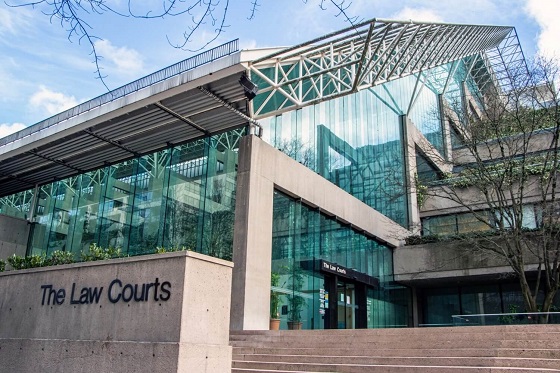
 Business2 days ago
Business2 days agoLand use will be British Columbia’s biggest issue in 2026
-

 Business1 day ago
Business1 day agoStripped and shipped: Patel pushes denaturalization, deportation in Minnesota fraud
-

 Energy1 day ago
Energy1 day agoRulings could affect energy prices everywhere: Climate activists v. the energy industry in 2026
-

 International1 day ago
International1 day agoChina Stages Massive Live-Fire Encirclement Drill Around Taiwan as Washington and Japan Fortify
-
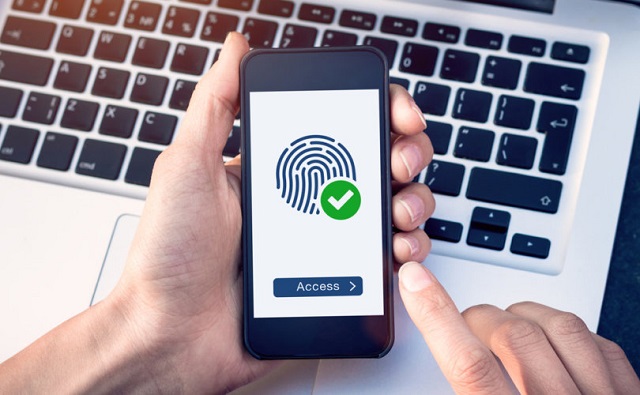
 Digital ID1 day ago
Digital ID1 day agoThe Global Push for Government Mandated Digital IDs And Why You Should Worry
-

 Business23 hours ago
Business23 hours agoFeds pull the plug on small business grants to Minnesota after massive fraud reports
-

 Business12 hours ago
Business12 hours agoDOOR TO DOOR: Feds descend on Minneapolis day cares tied to massive fraud
-

 Bruce Dowbiggin12 hours ago
Bruce Dowbiggin12 hours agoIn Contentious Canada Reality Is Still Six Degrees Of Hockey






